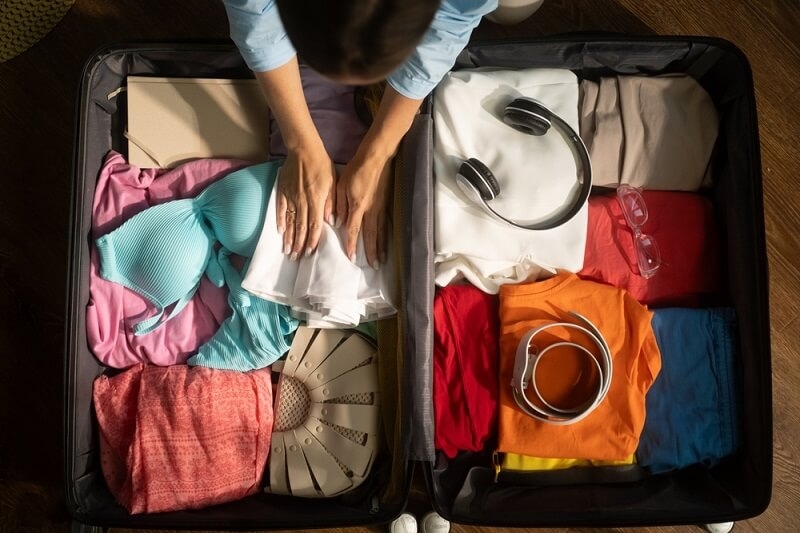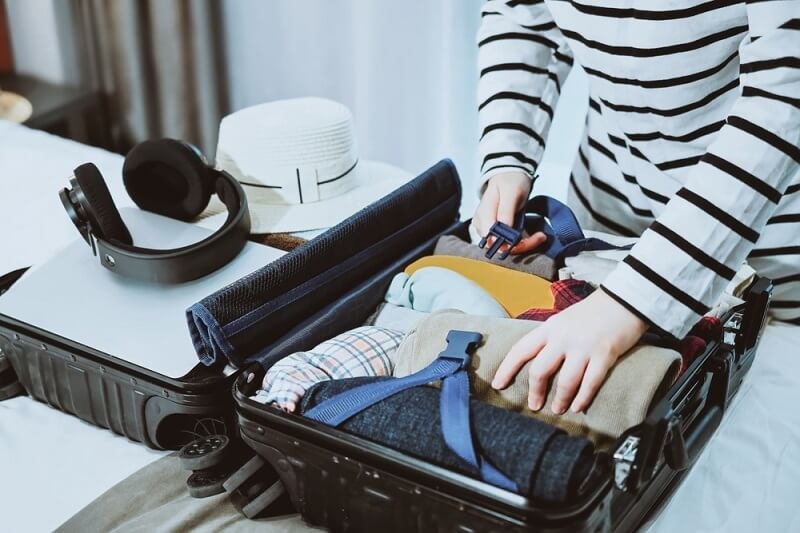
Traveling around the country, whether for business or pleasure or an unplanned last-minute road trip, can quickly become stressful if your packing is poorly organized. Overpacking, underpacking, forgetting essential items—poor packing can turn what should be a fun experience into frustration and unplanned expenses. To give you all the best resources, we have created the ultimate guide called "25 packing hacks every U.S. traveler should know in 2025".
Whether flying across the country, driving through national parks, or taking a weekend trip, these innovative travel hacks will keep your luggage lighter, brighter, and more organized without forgoing your essentials.
Are you ready to travel smarter? Let’s jump right in.
Smart packing is more important than ever in 2025. Airlines continue to make baggage policies stricter, and travel prices are increasing, so efficient packing can save you money, time, and stress. Overpacking leads to extra baggage fees, and underpacking means unexpected purchases. Clever packing techniques, such as rolling, packing cubes, and packing multiple-use items, can leverage every inch of packing space while keeping luggage as light as possible.
Also, organized packing allows for quicker security checks and less risk of lost items. With eco-friendly travel trending, packing light can decrease carbon footprints. With packing hacks up your sleeve, you'll ensure a smoother travel experience, allowing you to spend more time enjoying experiences rather than wrestling with all of your luggage. Travel smart, not hard, in 2025.
Let's unpack these hacks.
Pack:
This minimalist approach is adequate for trips of one week's duration and helps you ditch overpacking.
Packing cubes are amazing. They compress clothing, organize your outfits by kind or day, and help you quickly pinpoint items.
Rolling your clothes saves space and encourages fewer wrinkles. This is one of the best travel light tips for any trip.
Pack items with multiple uses, like dresses that can be worn during the day or the evening, or a scarf that can be used as a blanket.
Compression bags are great for winter trips or extended stays. They will compress jackets and sweaters and save valuable space in your suitcase.
One pair of casual shoes (walking shoes or sneakers) and one pair of formal or occasion-specific shoes (hiking boots or sandals) is usually enough.
Packing small items in your shoes, such as socks, jewelry pouches, and chargers, can save space and preserve the shape of the boots.
This resolves the issue of your shoes making your clean clothes dirty, especially valuable when returning home from a wet or muddy hike.
If you must pack boots or a jacket, wear them on the plane to open up that suitcase space and stay warm in the chilly airport terminals.
Hats, sunglasses, and costume jewelry can completely change your outfit and occupy virtually no space. Pack only versatile accessories.
You can make your shampoo, conditioner, and lotion into TSA-approved travel bottles. These bottles are eco-friendly and meet airline security standards.
Opt for solid versions of your essentials (shampoo bars, solid toothpaste, deodorant sticks). They’re spill-proof and airline-friendly.
These tiny compartments are ideal for storing small amounts of skincare products, saving space and weight.
Keep a go-bag of essentials packed at all times. This makes spontaneous trips easy and ensures you never forget toothpaste or razors again.
Could you place a sheet in your bag to keep clothes smelling fresh? It also reduces static and helps repel insects in warmer regions.

Most airlines allow a backpack or tote as your item. Use it for valuables, snacks, a change of clothes, and travel documents.
Include essentials like pain relievers, bandages, and allergy meds. You never know when a headache or blister might strike.
Stay hydrated and avoid overpriced airport drinks. Collapsible bottles fit in your bag when not in use and are great for eco-conscious travelers.
Valid for day trips or bringing back souvenirs, a foldable bag takes up little space but adds huge convenience.
Keep your charging cables, power banks, earbuds, and adapters in one place. It reduces tangles and saves time during security checks.
Could you tailor your list based on region, weather, and activities? A Florida beach trip and an Alaska hiking adventure will have vastly different needs.
Use apps like PackPoint or Google Keep to stay organized and avoid forgetting essential items.
While forecasts help, bring one layer for warmth and one for rain, just in case. Weather can change rapidly in certain U.S. regions like the Rockies or New England.
A travel-sized detergent packet or soap bar can help you do laundry on longer trips, meaning you can pack fewer clothes overall.
Please don't go ahead and fill your bag to the brim. Leave space for gifts, local goodies, or last-minute purchases.
Not all airlines have the same carry-on limits. Check size, weight, and fee details before departure to avoid last-minute repacking at the airport.
Here’s how to adjust your approach depending on where you’re headed:
Once you harness the skill of adequate packing, you will save space and improve the travel experience. If you don't have much to lug around, you'll be able to move faster, spend less on baggage fees, and stress less.
These 25 genius packing hacks every traveler in the U.S. should know in 2025 are more than just tips; these are actionable, proven practices to help you travel lighter and better. They will serve you just as well whether you're flying coast-to-coast or taking a road trip for the weekend.
Because when you aren't thinking of what you have packed, you'll be able to focus on what matters: the journey ahead.
This content was created by AI